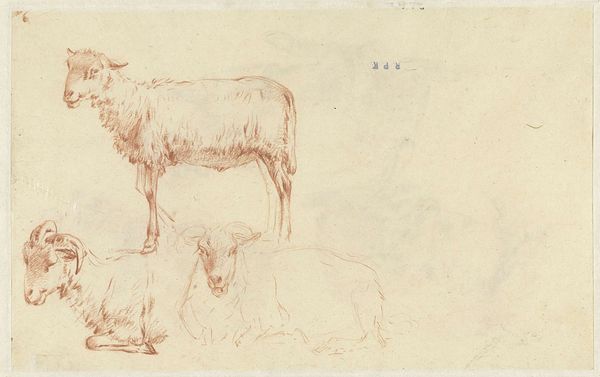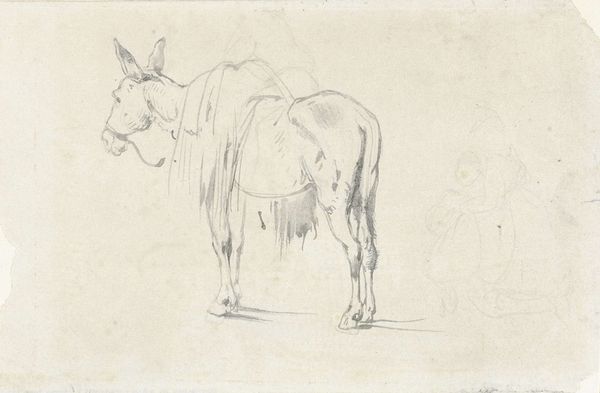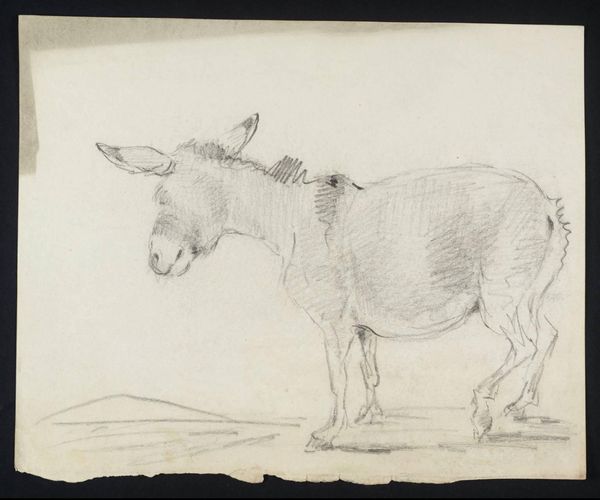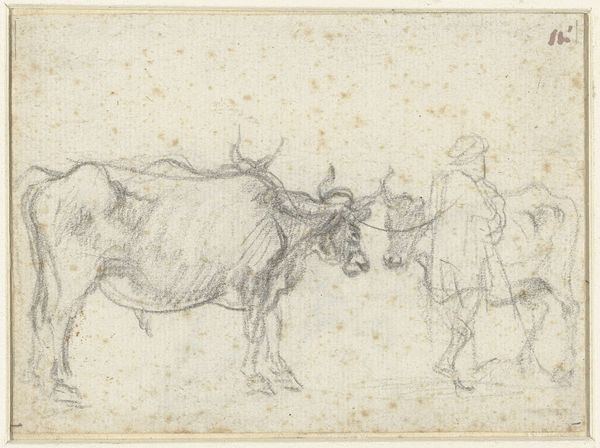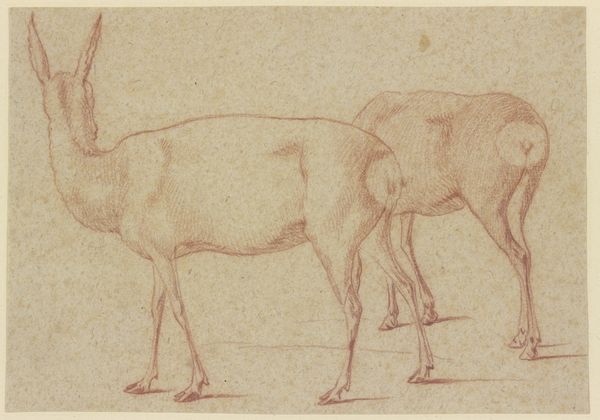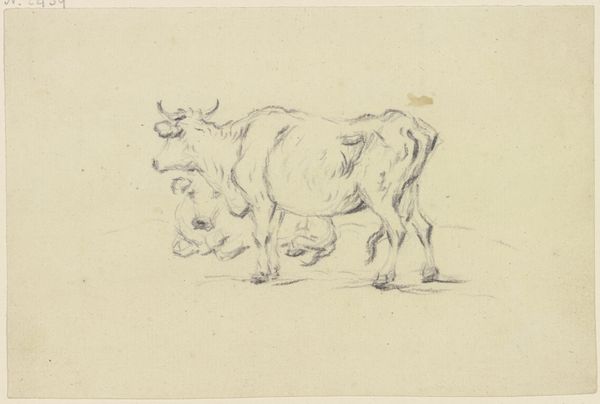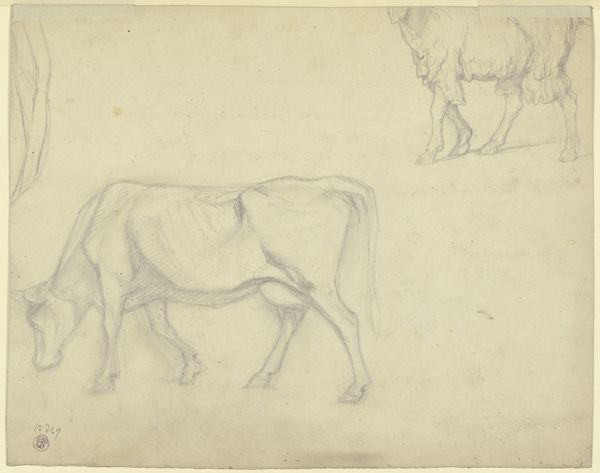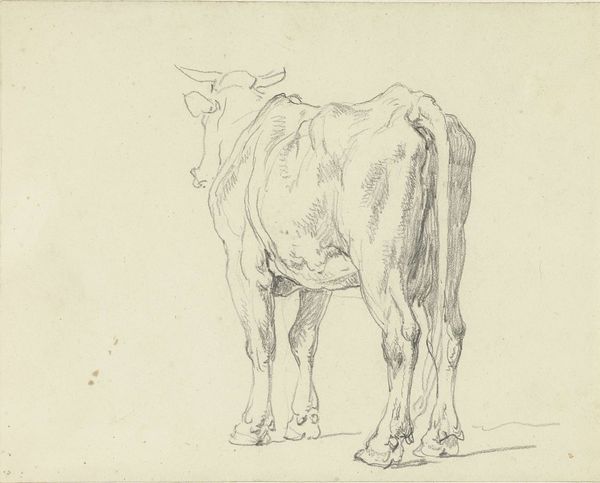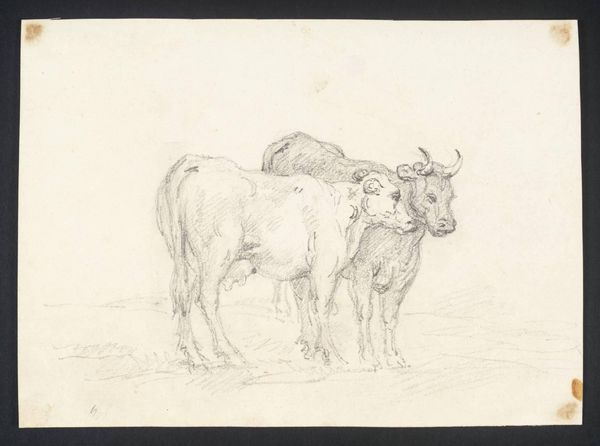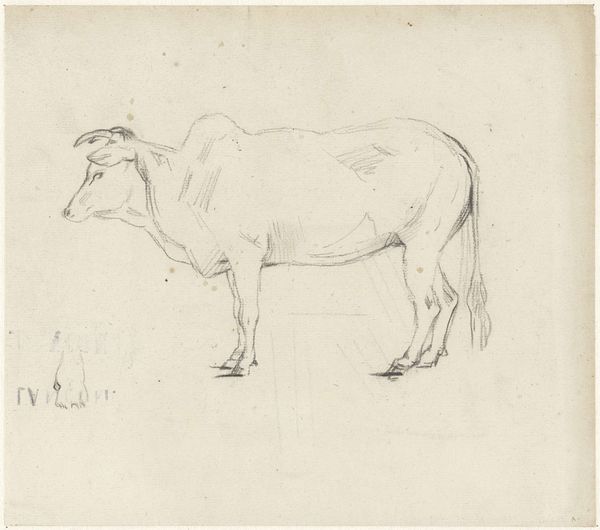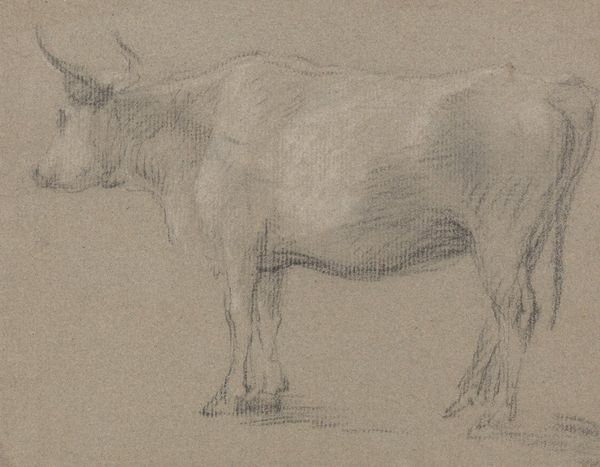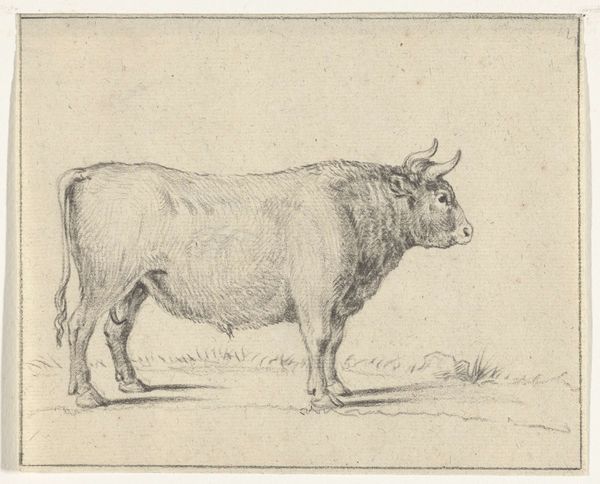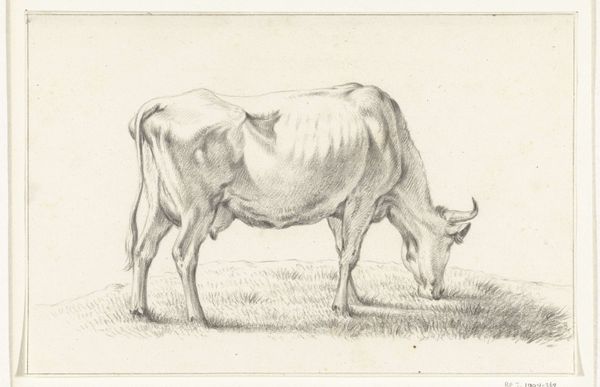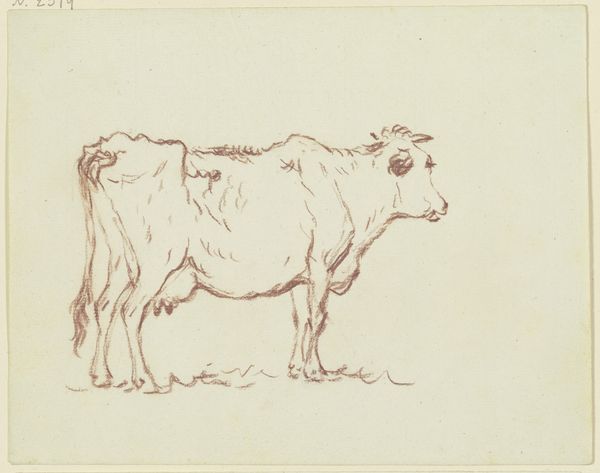
drawing, pencil, graphite
#
drawing
#
animal
#
pencil sketch
#
landscape
#
folk-art
#
pencil
#
horse
#
graphite
#
genre-painting
#
realism
Dimensions: height 137 mm, width 164 mm
Copyright: Rijks Museum: Open Domain
Curator: Welcome. We are standing before "Landscape with Cow and Horse," a drawing created around 1777 by Joannis Jacobus Bijlaert, part of the collection at the Rijksmuseum. It is crafted with pencil and graphite. Editor: There’s something remarkably stark about this sketch. The way the animals are rendered against that pale background gives it such an austere feel. The sparseness emphasizes their forms, their presence. Curator: Indeed. The lack of detail in the landscape shifts the focus entirely onto the animals themselves. Bijlaert has rendered them with realistic anatomy. Think of these animals as representatives of Dutch rural life and of simpler times. Editor: I'm struck by the cross-hatching; it gives so much texture, particularly to the cow. And the light seems to fall rather realistically. But where are we? I sense almost nothing of place. It makes them… universals, almost. Curator: Perhaps Bijlaert wasn’t aiming for specificity. In art, we often see animals symbolizing different virtues or concepts. A cow, for example, could signify abundance, while a horse might represent strength. Do you see this symbolism? Editor: Hmm. More persuasive to me is seeing these shapes as an essay in lines; notice how his strokes capture light playing across muscle. It seems more like observation. If we force meaning, we might overlook just seeing! Curator: A fair point. While the symbolism isn’t explicit, knowing the social context allows for these interpretations. Ultimately, these images reflected something important to viewers. They were, if nothing else, images of sustenance and stability. Editor: I can grant the importance to a period trying to see itself clearly. I'll walk away simply appreciating its careful artistry. There's a pleasure simply in its realism, however achieved. Curator: Yes, and thinking about the values Bijlaert's work has acquired over time provides the means to connect past to present, perhaps re-imagining how people viewed their daily surroundings two centuries ago.
Comments
No comments
Be the first to comment and join the conversation on the ultimate creative platform.
